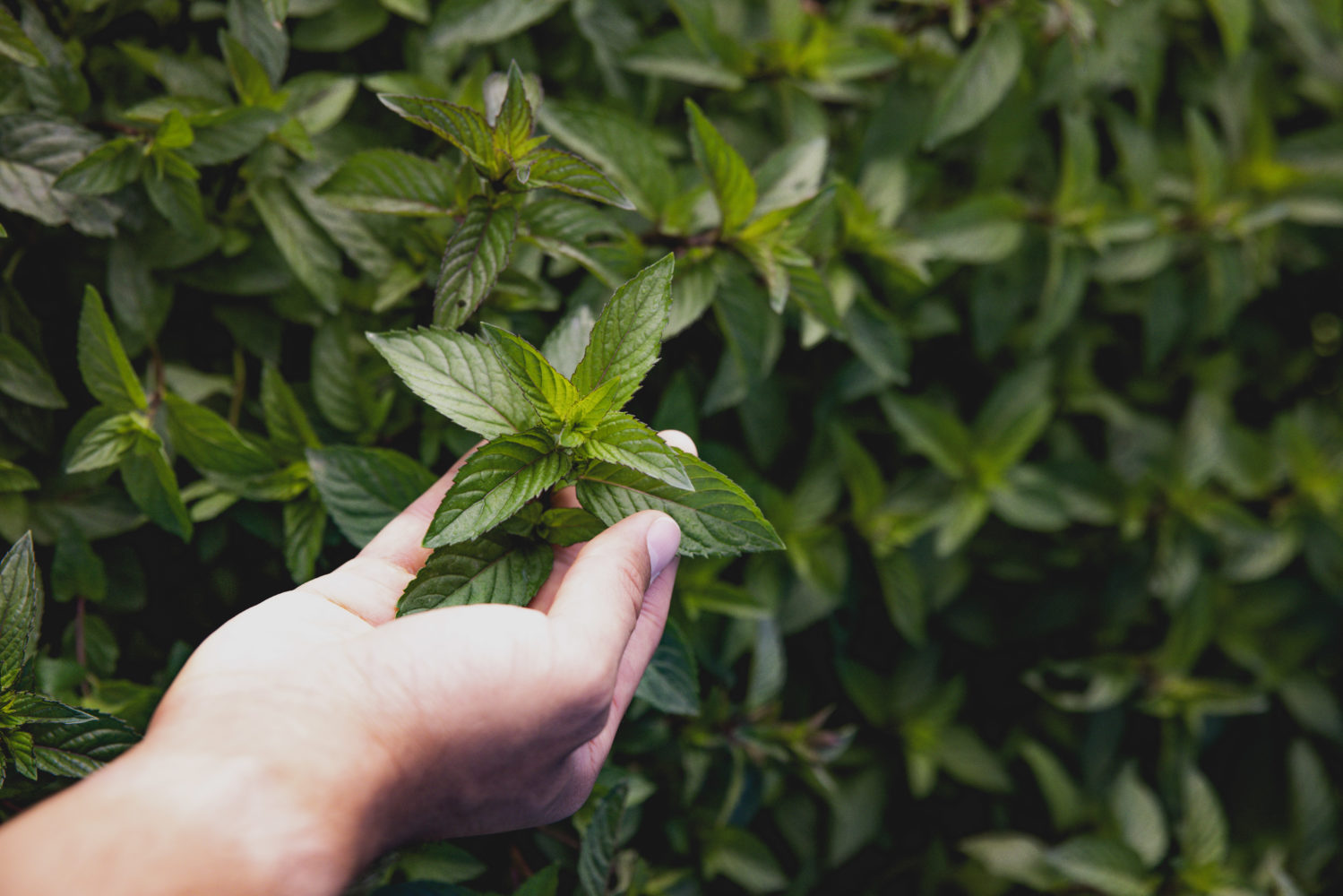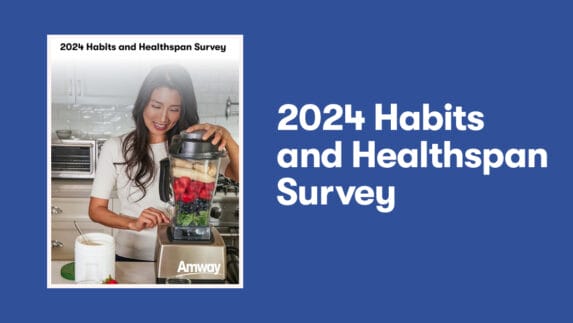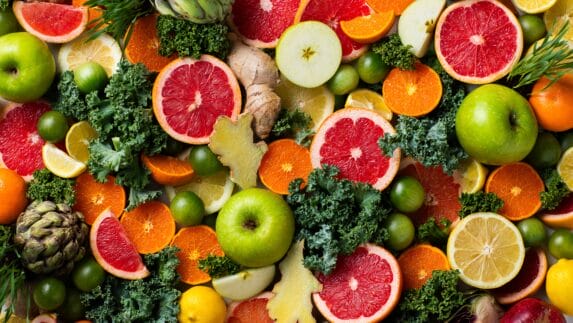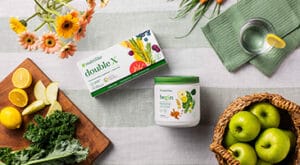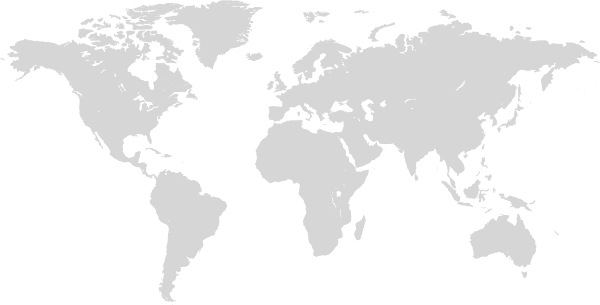Peppermint is a refreshing herb that might make you think of your favorite gum or breath spray, a relaxing tea or maybe an ice cream shake.
While many backyard gardeners find it easy to grow—almost too easy!—growing it organically on a commercial scale is no small feat. Just ask the farm team at the organic Nutrilite Trout Lake Farm in Washington state.
“Most growers that we know that have tried it organically give up within three years,” said Darwin Hintz, farm manager at Trout Lake East. “They start out, but then the weeds take over. It was too difficult to do without chemicals.”
It is a challenge, Darwin said, but the Nutrilite farm team powers through and have been producing the peppermint crop at the certified organic Trout Lake Farm for 20 years, improving their system through innovation each year.
A new way to deliver nutrients
One of the recent innovations to Trout Lake’s peppermint operation is using a plane to apply micronutrients to the plants and the soil.
“It’s organic farming at 150 miles an hour,” Darwin said. “And because we’re using aerial application, we don’t leave any tracks in the field, no soil compaction and we don’t damage the crop.
“And the plants love it. In 2-3 days you see a response. We’re spoon-feeding them exactly what they need.”
The plants also receive nutrients through “fertigation,” Darwin said, where precise combinations of organic fertilizers are mixed in with the irrigation system and delivered to the plants mixed with the water.
The specific peppermint variety grown at Trout Lake was chosen after several trials to ensure the resulting oils have the exact properties needed for each product, Darwin said. It’s used in Nutrilite supplements (It’s a good source of vitamin A, helps support eye health and improves flavor) and in Glister products (very refreshing!).
Peppermint is high-maintenance
Peppermint is a high-maintenance crop that requires lots of work. It’s grown in beds, not rows, which limits mechanized weeding methods. Flaming and new equipment techniques can be used as the crop emerges in the spring, but in the peppermint beds it’s almost all weeded by hand.
“We walk the fields every morning, every night, making adjustments to the plan on this crop,” he said. “We’re looking at botanical purity, crop maturity and timing. It’s intense.”
They are monitoring weeds, plant height, bird populations and irrigation schedules. Peppermint requires a lot of water, but it also has to dry out in between irrigating, Darwin said.
“Prior to harvest, we have to manage the water very tightly to build the oils in the plant,” he said. “There is a system we developed to get the crop to be stressed to a point that it produces the actives in the oil that we want.”
Peppermint harvest
During harvest, timing is even more important. “The crop changes by the hour at harvest time, literally by the hour,” Darwin said.
Before cutting the crop and forming windrows for field drying, the team has to be aware of moisture levels and temperatures to ensure the crop doesn’t cook in the field, basically turning to compost before it can be dried and milled.
The team developed lifter systems that carefully fluff the long rows of peppermint in order to expose all of its surface area to the sun, helping with airflow during the 3-4 days it takes to dry in the field.
While cuttings done later in the season, when it’s cooler, often head straight to the forced air dryers, the heat of the summer makes it more economical and efficient to dry the early cuttings right in the field.
“There’s no replacement for the sun and a nice even drying wind of 10-15 miles an hour,” Darwin said. “We can only do about five acres a day through our dryers. With field drying we can do about 30 acres a day.”
Falcon patrol: Protecting the crop
While field drying is efficient, it’s also the time when the crop is most vulnerable to contamination by birds.
“When a crop is standing, they’ve got to navigate a lot of aerial obstacles to get a bug or insect,” Darwin said. “Once it’s laid in a windrow, for the birds, that’s like a buffet table. They’ll say: ‘Let me just do a quick fly by to see if there’s anything I want for breakfast or lunch.’”
That’s when the farm team brings in the falcons, a team of predator birds specially trained to scare away other birds and protect the crops. Trout Lake has been using falcons as sustainable pest control since 2014.
“They learn the borders of our fields, they learn the perimeter,” Darwin said. “They’re like the sheriff just doing a good neighborhood watch.”
Peppermint plant: Nothing goes to waste
Most of the active compounds needed from peppermint are found in the leaves, but at Trout Lake, where sustainability is a priority, they make sure to use every portion of the plant.
Once dry, the leaves are milled and oiled. “The part that doesn’t get oiled gets composted and used at a local dairy farm for bedding,” Darwin said. “The cattle love it. I’ve been told time and time again that the cattle actually show a preference for the bedding made with our product over other bedding.” (Lucky cows!)
During harvest, the combine leaves the stems in the field. “If we’ve managed our timing correctly, the stem will be mowed back into the soil after we’re done and that becomes part of our mulch on the surface of the field,” Darwin said. “It preserves moisture and adds organic matter.”
Nothing goes to waste.
To learn more about our farms visit nutrilitetraceability.com.
* Unless indicated on the product label, Nutrilite products and ingredients are not organic.
